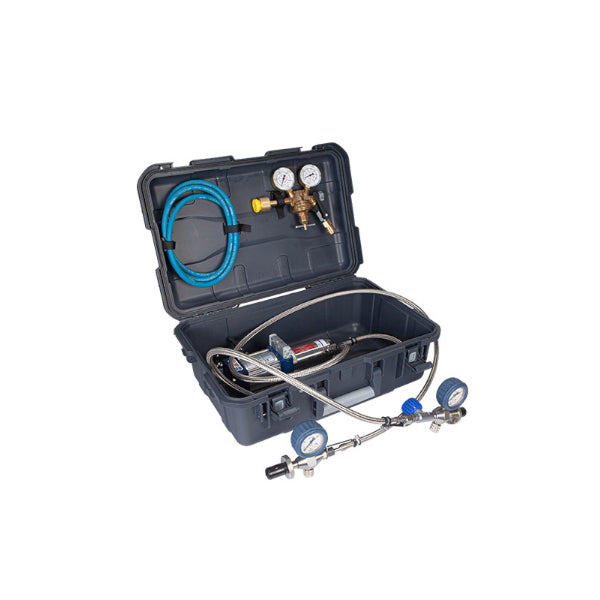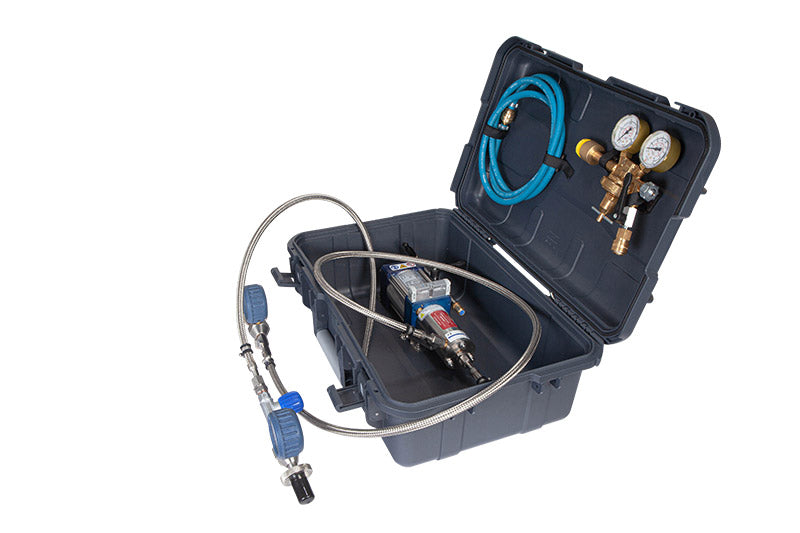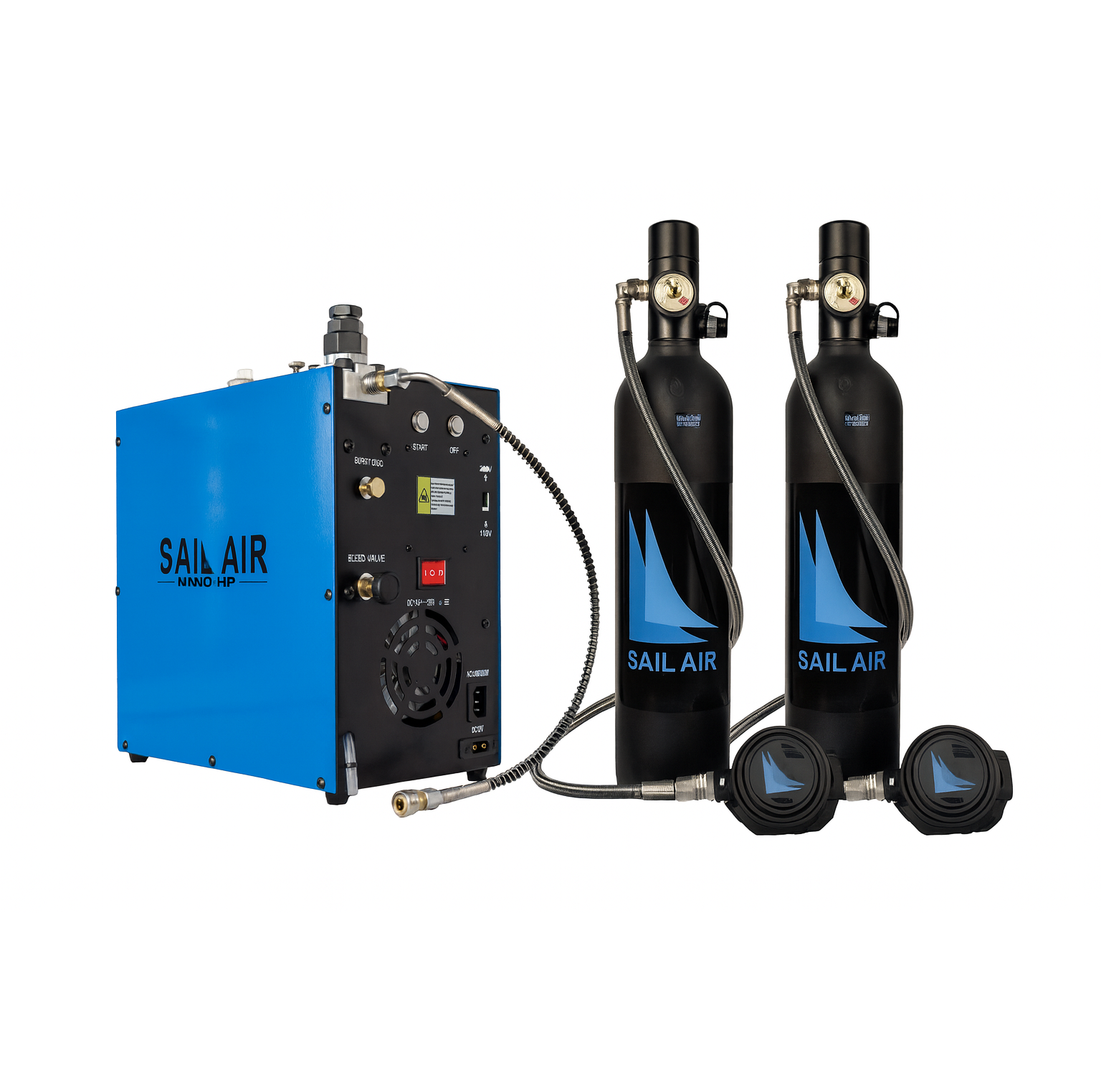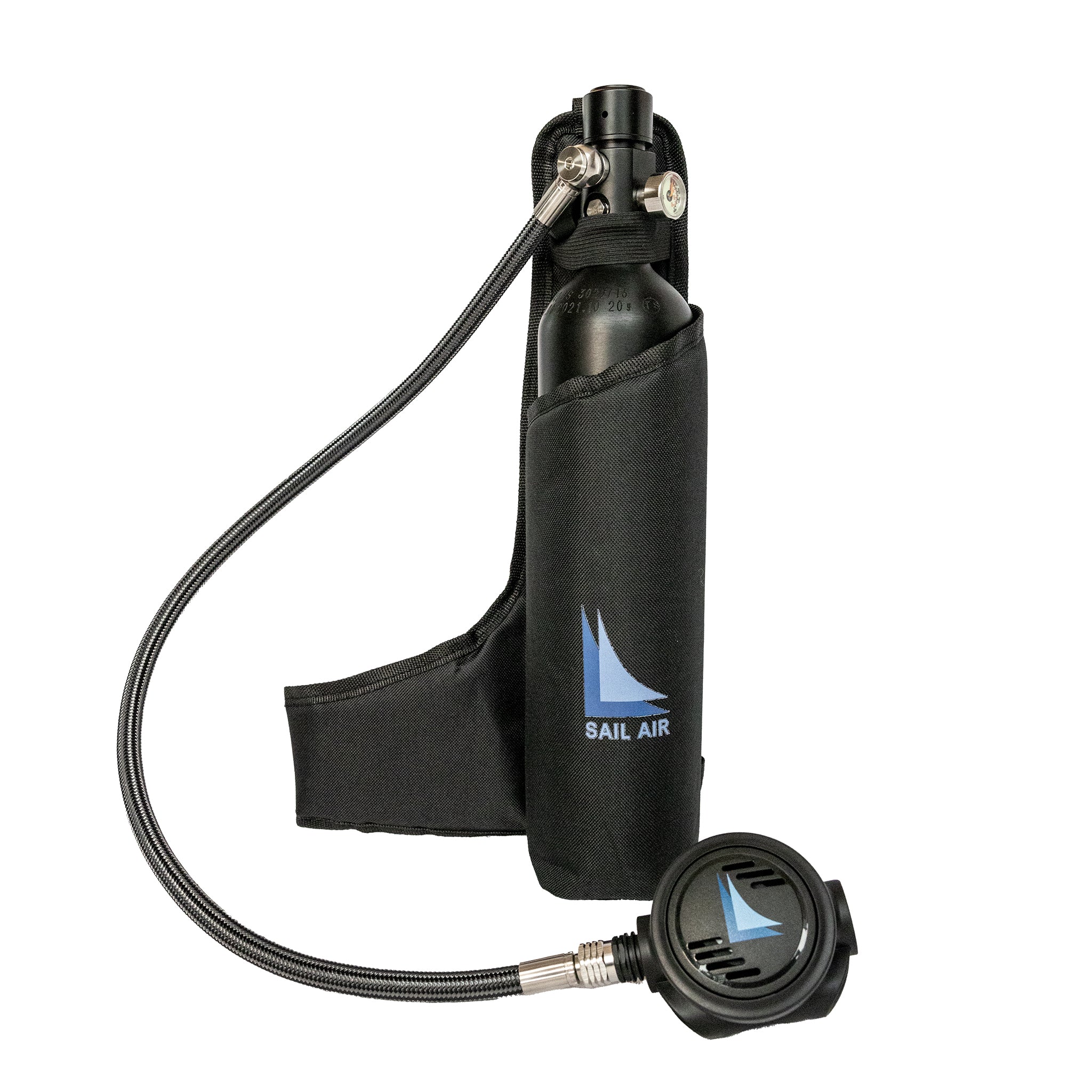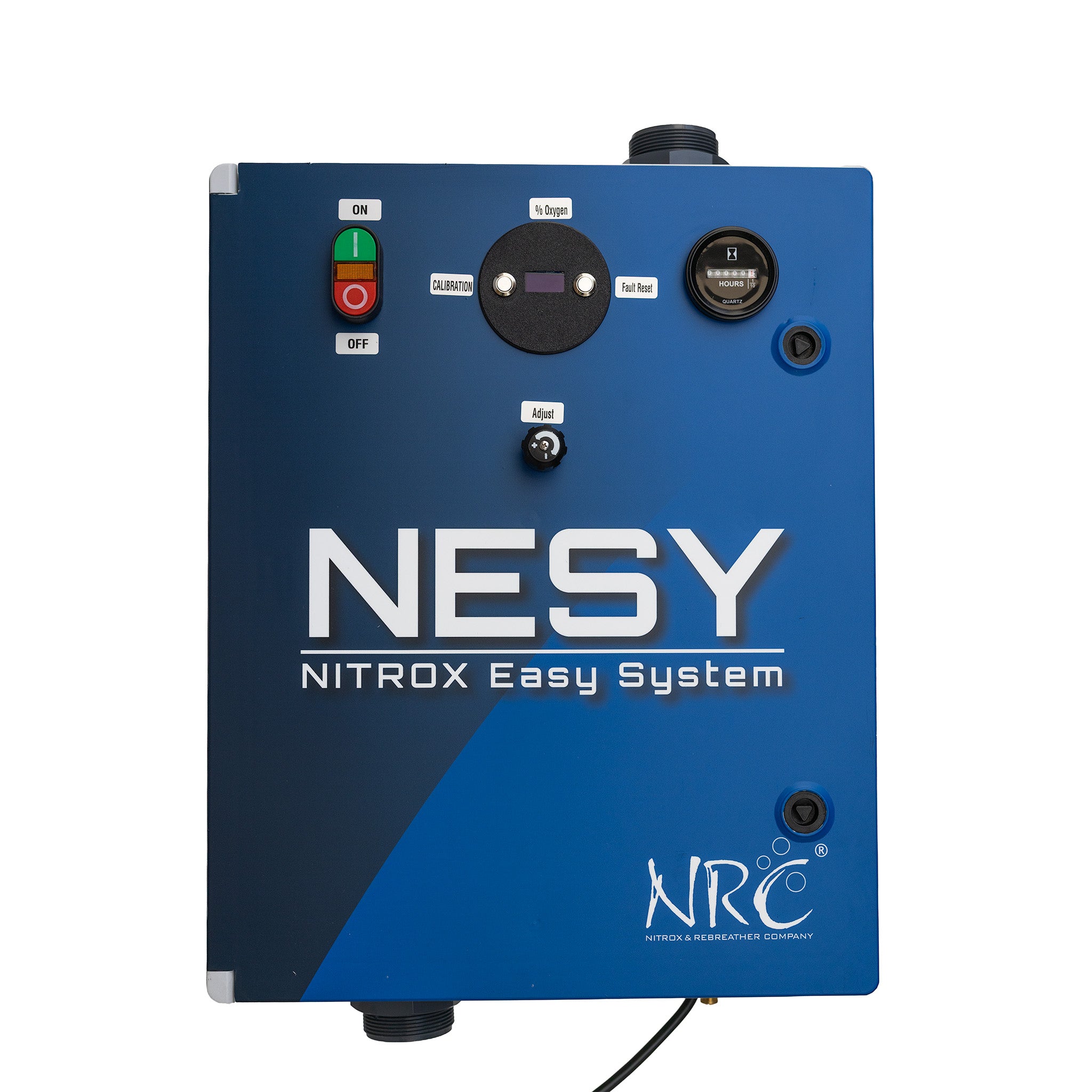For professional dive centers and liveaboards, choosing to produce Nitrox in-house is a big step. The method you use has a direct impact on the overall rhythm of your gas refill schedule.
This guide will give you a clear, step-by-step look at how a Nitrox membrane system works and why it has become the preferred solution for professional Nitrox production.
How a Membrane System Changes Air to Nitrox in 5 Steps
A Nitrox membrane system turns normal air into Nitrox by removing some of the nitrogen and leaving more oxygen behind. The process runs continuously at low pressure, which makes it safe and reliable for everyday use.
Here is how it works:
Step 1: The Compressor Pulls in Air
The process begins with a low-pressure compressor, which draws in ambient air and compresses it to around 10 bar (145 psi). This compressor delivers between 1,000 and 2,000 liters of air per minute, providing the foundation for Nitrox production.
Step 2: The Dryer Removes Moisture
As the air is compressed, it picks up humidity. The refrigerant dryer cools the air down to 3 degrees Celsius and strips out the moisture, leaving it dry and stable for the next stages.
Step 3: The Filters Clean the Air
After compression, the air flows through a three-stage filtration system. It first passes through a pre-filter, then a large activated carbon filter, and finally a 0.01-micron filter that removes the remaining particles, ensuring the air is thoroughly cleaned before moving to the next stage.
Step 4: The Membrane Separates Nitrogen
The air then passes through the nitrogen membrane, which separates nitrogen from oxygen. By removing nitrogen, the system increases the oxygen content of the gas. An adjustment valve allows precise control over how much nitrogen passes through, setting the final oxygen level of the Nitrox.
Step 5: The Compressor Fills the Tanks
Finally, the enriched air flows into the high-pressure compressor. Here it is compressed again, this time to fill scuba tanks with ready-to-use Nitrox for divers.
For a clearer look at each step, watch Stefan as he walks you through the Nitrox membrane system:
Comparing Membrane Systems and Partial Pressure Blending
While both membrane systems and partial pressure blending can produce what the Nitrox divers rely on, the real difference lies in daily use.
Let’s take a closer look at how these two approaches compare in real-world operations:
Safety in Daily Workflow
With a membrane system, the oxygen enrichment happens at low pressure. There are no oxygen tanks to manage, no decanting of pure O₂, and no extra servicing for oxygen-clean parts. Once the system is running, it quietly produces Nitrox in the background with minimal added risk.
Partial pressure blending feels very different. Each fill involves working directly with pure oxygen at high pressure, which means every tank, whip, and valve must be oxygen-clean and handled with care. It works well in the right hands, but it adds more steps and more things to watch for during busy days.
Reliability of the Mix
Operators using a membrane system get the same reliable mix with every fill. The system can deliver a consistent oxygen percentage across multiple tanks at the same time, ensuring uniform quality without additional steps or monitoring.
In partial pressure blending, the accuracy depends on the skill and focus of the blender. A slip in calculation, a temperature shift, or simply fatigue during a long filling session can all affect the final mix. For small batches, this might be manageable, but scaling up is where the challenges show.
Keeping Up with Demand
Perhaps the biggest difference is speed and scale. A membrane system works continuously, allowing you to fill multiple tanks back-to-back at the same pace as air fills. It keeps up with high-volume needs without slowing down your schedule.
Partial pressure blending, on the other hand, is a one-at-a-time job. Each cylinder requires focused attention from a technician. For a few tanks, this is manageable, but for a liveaboard or a busy resort with dozens of divers, it can quickly become a bottleneck.
The Smart Way to Produce Nitrox Every Day
Nitrox membrane systems have become the preferred choice for busy dive centers and liveaboards. The process is simple, continuous, and reliable, giving operators a steady flow of Nitrox without the risks and workload of partial pressure blending.
NRC international has spent decades designing systems that bring these benefits into daily operations. Built with German precision and made for durability, each unit is engineered for easy maintenance and long-term reliability.
Whether at a resort or on a liveaboard far from shore, NRC membrane systems deliver safe, consistent Nitrox so your team can focus on creating great dive experiences.
Explore NRC’s Nitrox membrane systems to see how we can support your operation’s growth and reliability!
Frequently Asked Questions
What is the typical maximum oxygen percentage a membrane system can produce?
Most diving membrane systems are designed to produce Nitrox up to 25 - 40% oxygen. This covers the full range of recreational Nitrox mixes and even the base mixes used for many technical dives.
How does ambient air quality affect the system's performance?
Air quality is important. Excess humidity, oil, or dust can shorten membrane life and reduce efficiency. However, you do not need to worry as NRC systems use a filtration system to dry and clean the air before it reaches the membrane, protecting the fibers and ensuring every fill meets quality standards.
Is specialized training required to operate a membrane system?
Daily operation is simple and intuitive. You do not need advanced blending skills, but NRC provides training to make sure your staff can handle the membrane system. With proper use, the system runs smoothly and consistently.

